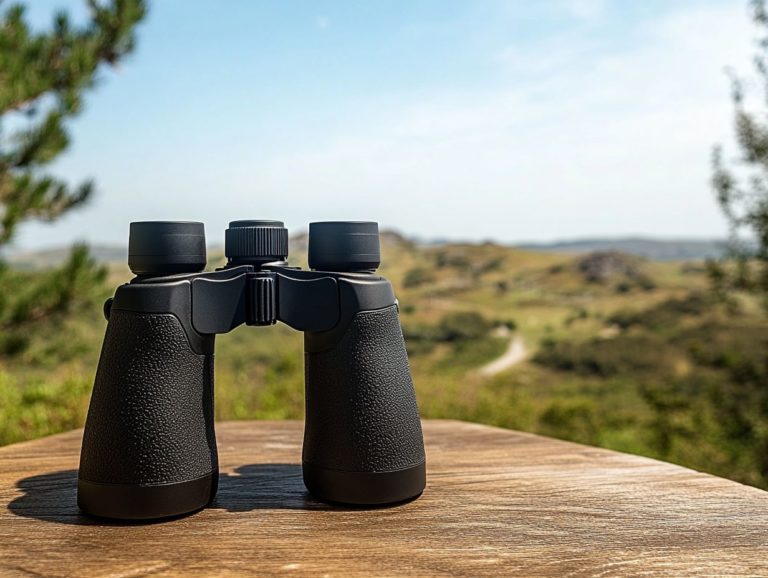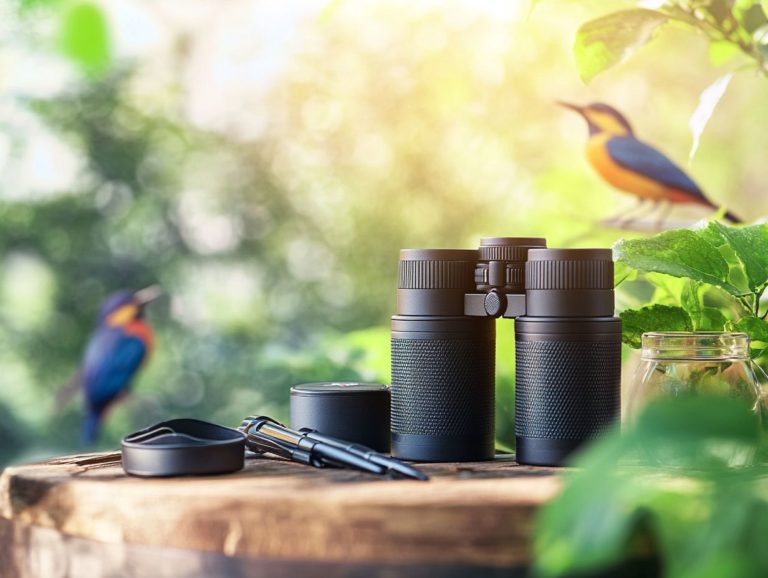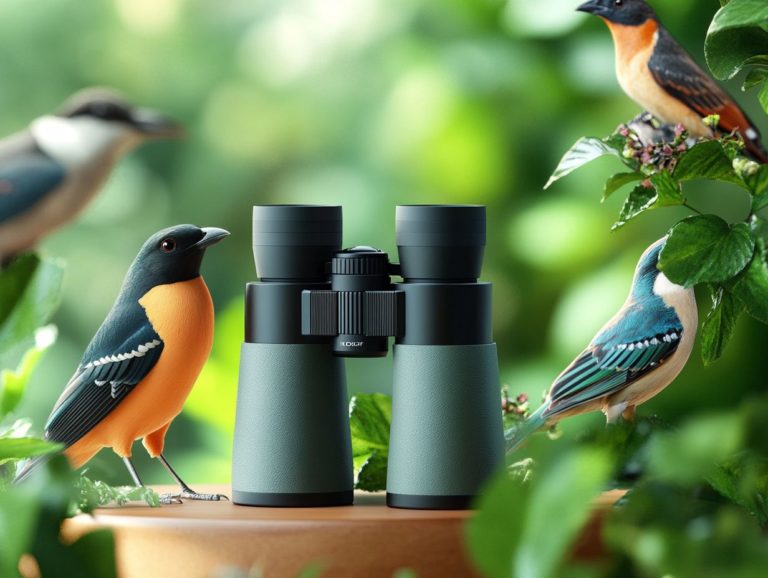The Science Behind Binocular Optics Explained
Binocular optics are essential for how you observe the world. They significantly enhance your vision and bring distant objects into sharp focus.
This discussion delves into the fundamental principles behind binoculars. We will explore the roles of lenses and prisms, different designs available, and key factors to consider when making a purchase.
Discover how binoculars create images. Gain valuable tips for troubleshooting common issues.
Dive into the exciting science that enhances your viewing experience!
Contents
- An Overview of Key Takeaways on Binocular Optics:
- What is Binocular Optics?
- The Basic Principles of Binocular Optics
- Types of Binoculars
- Factors to Consider When Choosing Binoculars
- How Binoculars Work
- Common Issues and Solutions in Binocular Optics
- Frequently Asked Questions
- What is binocular optics?
- What are the main components of binoculars and how do they affect magnifying power?
- How do binoculars magnify distant objects?
- What is the difference between a prism and a lens in binocular optics?
- How do binoculars produce a clear image?
- What is the purpose of coatings on binocular optics and how do they improve light transmission?
An Overview of Key Takeaways on Binocular Optics:
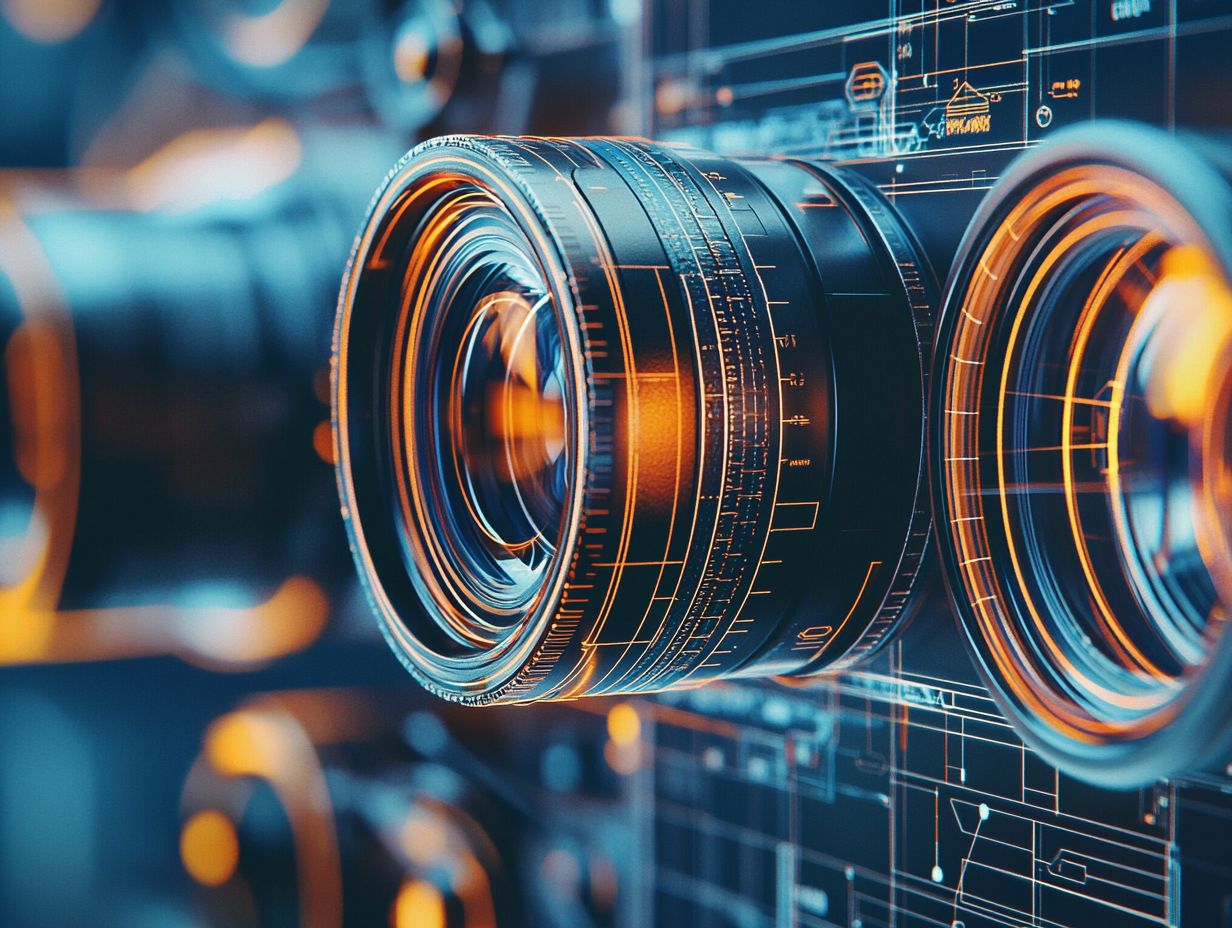
- Binocular optics utilize the principles of lenses and prisms to magnify and enhance the image seen by the human eye.
- There are various types of binocular designs, each with their own specific uses and features to consider when choosing the right pair.
- Understanding the science behind binocular optics can help troubleshoot common issues and properly maintain the equipment for optimal use.
What is Binocular Optics?
Binocular optics is an interesting area within the broader field of optics, dedicated to the detailed design and functionality of binoculars. These remarkable viewing tools allow you to enjoy a magnified view of distant objects by utilizing two optical systems that work together to enhance your binocular vision.
Key components of binocular optics include objective lenses and eyepiece lenses, along with prisms and specialized coatings. These elements work together to optimize light gathering and transmission, ultimately delivering high-quality images that closely replicate the natural perception of the human eye.
The Basic Principles of Binocular Optics
The fundamental principles of binocular optics hinge on the essential concepts of magnification and depth perception. Both are vital for obtaining a clear and immersive view of distant subjects.
Grasping how light rays are manipulated by the optical components in binoculars is crucial. This includes understanding the exit pupil, which is the diameter of the light beam exiting the eyepiece, and the dark-adapted pupil. This knowledge is essential when selecting the perfect pair for pursuits like wildlife watching or stargazing.
Understanding these nuances ensures you make an informed choice, enriching your viewing experiences.
Understanding the Role of Lenses and Prisms
The role of lenses and prisms in binoculars is pivotal for crafting a magnified view that remains clear and undistorted. Objective lenses gather light rays and focus them, while the eyepiece lens magnifies the image. The arrangement of Porro prisms or roof prisms significantly influences the optical design and overall compactness of your binoculars.
Each configuration presents distinct advantages. For instance, Porro prisms typically provide a wider field of view, enhancing your experience in situations where peripheral vision is essential. Roof prisms offer a more streamlined design, perfect for portability, though they might sacrifice some light transmission and brightness.
The quality of glass in these optical components is crucial as well; higher-quality materials deliver sharper images and improved color fidelity. Grasping these nuances helps you select the right binoculars and enriches your overall viewing experience, allowing you to fully appreciate the subtleties of your surroundings.
Types of Binoculars

Explore the amazing variety of binoculars available today! Each is tailored to meet distinct needs and preferences. From sleek, compact designs perfect for travel to robust models built for the great outdoors, the choices are plentiful.
Among them, zoom binoculars stand out with their variable magnification, providing you the flexibility necessary for everything from stargazing to observing wildlife. Some options are designed specifically for photographers and outdoor enthusiasts, featuring specialized optical systems that enhance your viewing experience.
In conclusion, as you consider the wide array of binoculars, remember to explore your options wisely to enhance your viewing adventures!
Different Designs and Their Uses
Different designs of binoculars, such as Porro prisms and roof prisms, significantly influence their performance and usability for various activities like wildlife watching and nighttime viewing. Each design has unique characteristics that impact how much light the binoculars can capture, image inversion, and overall compactness. This makes it crucial to choose the right type for your specific observational needs.
If you opt for Porro prism binoculars, you’ll find they provide a wider field of view and deeper depth of field. They excel in situations where you want to capture expansive scenery perfect for birdwatching or nature hikes. Conversely, if portability and ease of use are your top priorities, the more compact roof prism models are ideal for stargazing. Their streamlined shape allows you to easily tuck them into your backpack, making them a preferred choice for astronomers on the go.
Keep in mind that these roof prism designs might sometimes sacrifice light transmission, leading to less vibrant images in dim conditions. By understanding these nuances, you can confidently choose the best tool for an optimal viewing experience.
Factors to Consider When Choosing Binoculars
When choosing binoculars, several crucial factors demand your attention, including magnification, field of view, and the quality of lens coatings. Each of these elements significantly contributes to the overall image quality and your experience as a user.
It’s essential to understand the relationship between magnification and exit pupil, as well as how the coatings impact light transmission and minimize light loss. This knowledge will help you make an informed choice tailored to your specific needs.
Magnification, Field of View, and Other Features
When evaluating binoculars, magnification and field of view are two specifications you cannot afford to overlook. They directly influence your ability to observe distant objects with clarity.
Features like how well binoculars work in low light and dioptre adjustment greatly enhance optical performance, especially in varying lighting conditions.
Understanding these features is essential for anyone engaged in pursuits such as birdwatching or stargazing, where clarity and detail are vital. A higher magnification can bring distant birds or celestial objects into sharper focus, while a broader field of view allows for better tracking of moving subjects, enhancing your experience.
If you re venturing out during dawn or dusk, a greater twilight factor ensures that low-light scenarios won t diminish your enjoyment.
Dioptre adjustment is crucial for accommodating differences in eyesight between your eyes, allowing you to achieve the sharpest vision possible without straining. It’s important to try out various models to discover the perfect balance that meets your specific observational needs.
How Binoculars Work

The way binoculars function is a fascinating interplay of light rays, meticulously navigating the optical path through various components to offer you a magnified view of distant objects.
Essential tasks such as focus adjustment and precise alignment of optical components work in harmony to deliver a clear, detailed image, closely resembling your own vision.
In conclusion, understanding the different binocular designs, key specifications, and features is essential for selecting the right pair. This knowledge will enhance your viewing experience, whether you’re birdwatching, stargazing, or enjoying nature hikes.
Explore your options or visit a store to try out various binoculars today!
The Process of Image Formation
The process of image formation in binoculars involves the parts of binoculars that help you see better. These components work together to manipulate light rays, shaping the quality and clarity of the images you observe.
Factors like lens surface coatings and the type of prisms used are crucial for enhancing light transmission and minimizing image inversion. Both aspects can greatly influence your viewing experience.
In this intricate system, elements such as lens curvature and material choice are key in determining how light converges. This ensures a sharp focus across various distances. Using high-quality glass in these lenses is crucial; it reduces distortions and boosts color and contrast.
Anti-reflective coatings are equally important, as they diminish internal reflections and enhance overall brightness. Your choice of prisms whether roof or Porro types affects the binoculars’ compactness and ergonomics while maintaining optical accuracy.
Together, these components work beautifully to deliver a crisp, vivid image, elevating your observational experience to new heights.
Common Issues and Solutions in Binocular Optics
Common issues in binocular optics can arise from factors like lens coatings, optical characteristics, and even user mistakes. These problems may lead to light loss or diminished image clarity.
You must tackle these challenges to ensure optimal performance and extend the longevity of your binoculars through proper maintenance and effective troubleshooting techniques.
Troubleshooting Tips and Maintenance
Troubleshooting tips and maintenance practices are vital for preserving the functionality and image quality of your binoculars over time.
Establish a routine care schedule to enjoy clearer and sharper visuals during your outdoor adventures. This involves gently cleaning the eyepieces and objective lenses with a microfiber cloth to remove dust, fingerprints, and debris that could obstruct your view.
Don’t forget to check the alignment it’s key to a great viewing experience! Misaligned optics can lead to frustrating viewing situations.
Stay aware of environmental factors, such as humidity and extreme temperatures, as these can significantly affect performance. Finally, store your binoculars in a protective case when not in use. This extra layer of security helps ensure they remain in peak operating condition for years to come.
Frequently Asked Questions
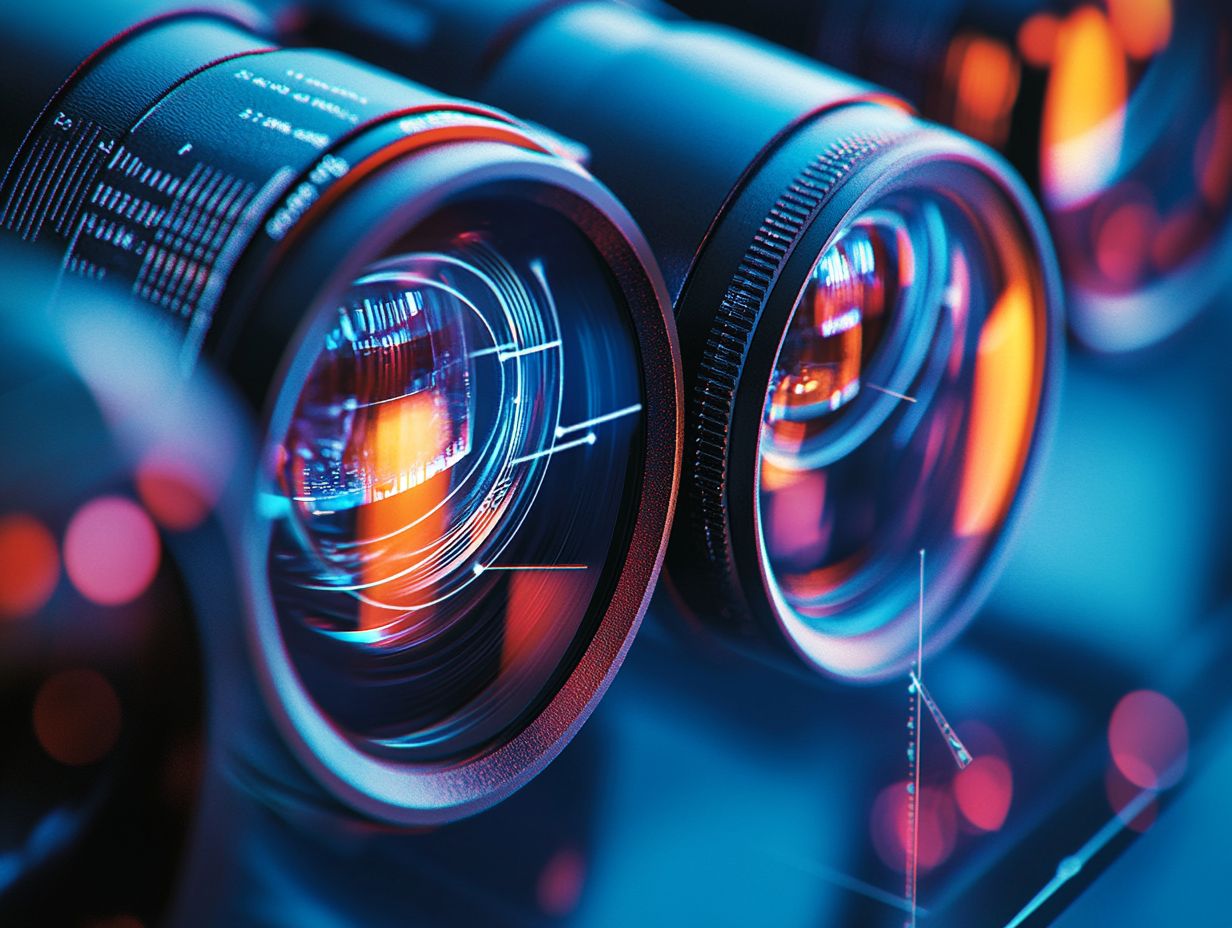
What is binocular optics?
Binocular optics is the study of how light behaves and is manipulated in binoculars, which are optical instruments used for magnifying distant objects.
What are the main components of binoculars and how do they affect magnifying power?
The main components of binoculars include the objective lens, eyepiece, and prism. The objective lens collects light from distant objects, the eyepiece magnifies the image formed by the objective lens, and the prism reflects light to provide a correctly oriented image for the viewer.
How do binoculars magnify distant objects?
Binoculars use a combination of lenses and prisms to magnify distant objects. The objective lens gathers light and forms an image, which the eyepiece then magnifies for viewing.
What is the difference between a prism and a lens in binocular optics?
Lenses bend and focus light, while prisms reflect and redirect it. In binoculars, the objective lens collects and focuses light, while the prism reflects and redirects the image formed by the lens to the eyepiece.
How do binoculars produce a clear image?
Binoculars produce a clear image by using high-quality lenses and prisms that minimize distortion and aberrations. The quality of materials and the precision of the manufacturing process also significantly contribute to image clarity.
Dive into the world of optics pick the right binoculars for your next adventure!
What is the purpose of coatings on binocular optics and how do they improve light transmission?
Coatings on binocular optics help more light reach your eyes while reducing glare. This results in a brighter and clearer image.
These coatings also protect the lenses from scratches, keeping your binoculars in top shape!

